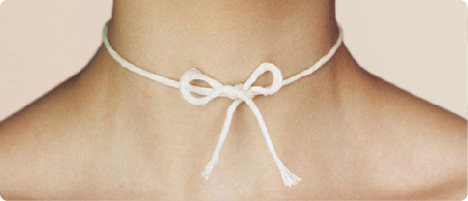
According to Kolnet, an online media source focused on the Tohoku region of Japan, the number of under-18s in Fukushima Prefecture diagnosed with thyroid cancer has increased to 12, while the number of possible cases has reached 15.
The numbers were released as part of an ongoing investigation by the Fukushima Prefecture Board of Health into the effects of the radiation released in the explosion at Tokyo Electric Fukushima Daiichi Power Plant in 2011. The investigation has examined about 174,000 adults and children from towns surrounding the crippled plant.
In the last report, made in February, there were only three confirmed cases of thyroid cancer and seven suspected cases.
According to a representative of Fukushima Medical University, which has been running the tests, they cannot conclusively link the incidences to Fukushima Daiichi, because although there were confirmed cases of cancer linked to the Chernobyl incident, many of these did not present until four or five years after or even later.
Some have pointed out that comparisons to the Chernobyl incident may not be particularly enlightening anyway, as intensive medical examinations into children exposed didn’t even begin until years after. Additionally, compared with that of Chernobyl, the population in Fukushima was exposed to less radiation, had more iodine in their diet, and had access to iodine prophylaxis, so the negative impact is expected to be much less.
However, according to one study that might be a more useful comparison, of 250 schoolchildren examined in Nagasaki in 2000, only 0.8% of them had thyroid nodules, of which none were found to be malignant. Additionally, the incidence of thyroid cancer in the general population is just one or two in 12 million children.
This suggests the numbers in Fukushima may already be high, and some experts believe they are even higher than the Board of Health investigation has claimed due to weaknesses in their methodology, such as not accounting for migration and not bringing children with small nodules in to be reexamined.
Source: Kolnet
Image: Light of Life Foundation

 First worker to die from Fukushima radiation exposure officially recognized by Japan’s government
First worker to die from Fukushima radiation exposure officially recognized by Japan’s government New research suggests even low-level radiation in Fukushima negatively impacting wildlife
New research suggests even low-level radiation in Fukushima negatively impacting wildlife U.S. military personnel launch US$5 billion lawsuit against Tokyo Electrical Power Company
U.S. military personnel launch US$5 billion lawsuit against Tokyo Electrical Power Company Lawson convenience stores in Kyoto to begin offering cancer screenings
Lawson convenience stores in Kyoto to begin offering cancer screenings Miso soup could help protect against cancer, research suggests
Miso soup could help protect against cancer, research suggests McDonald’s new Happy Meals offer up cute and practical Sanrio lifestyle goods
McDonald’s new Happy Meals offer up cute and practical Sanrio lifestyle goods More foreign tourists than ever before in history visited Japan last month
More foreign tourists than ever before in history visited Japan last month Starbucks reopens at Shibuya Scramble Crossing with new look and design concept
Starbucks reopens at Shibuya Scramble Crossing with new look and design concept Is the new Shinkansen Train Desk ticket worth it?
Is the new Shinkansen Train Desk ticket worth it? Our reporter takes her 71-year-old mother to a visual kei concert for the first time
Our reporter takes her 71-year-old mother to a visual kei concert for the first time Disney princesses get official manga makeovers for Manga Princess Cafe opening in Tokyo
Disney princesses get official manga makeovers for Manga Princess Cafe opening in Tokyo Dogs now allowed on Catbus! Ghibli Park vehicles revise service animal policy
Dogs now allowed on Catbus! Ghibli Park vehicles revise service animal policy The 5 best Japanese bento to buy at Kyoto Station
The 5 best Japanese bento to buy at Kyoto Station Great deals of Kanagawa lead to the Italian senbero from Shokuhinkan Aoba【Japan’s Best Home Senbero】
Great deals of Kanagawa lead to the Italian senbero from Shokuhinkan Aoba【Japan’s Best Home Senbero】 We tried Japan’s Strawberry Daifuku? liqueur, one of three dessert-themed liqueurs
We tried Japan’s Strawberry Daifuku? liqueur, one of three dessert-themed liqueurs We try out “Chan Ramen”, an underground type of ramen popular in the ramen community
We try out “Chan Ramen”, an underground type of ramen popular in the ramen community Foreign English teachers in Japan pick their favorite Japanese-language phrases【Survey】
Foreign English teachers in Japan pick their favorite Japanese-language phrases【Survey】 Beautiful new Final Fantasy T-shirt collection on the way from Uniqlo【Photos】
Beautiful new Final Fantasy T-shirt collection on the way from Uniqlo【Photos】 There’s a park inside Japan where you can also see Japan inside the park
There’s a park inside Japan where you can also see Japan inside the park New Studio Ghibli bedding sets are cool in all senses of the word
New Studio Ghibli bedding sets are cool in all senses of the word Japanese convenience store packs a whole bento into an onigiri rice ball
Japanese convenience store packs a whole bento into an onigiri rice ball Hanton rice — a delicious regional food even most Japanese people don’t know about, but more should
Hanton rice — a delicious regional food even most Japanese people don’t know about, but more should New Pokémon cakes let you eat your way through Pikachu and all the Eevee evolutions
New Pokémon cakes let you eat your way through Pikachu and all the Eevee evolutions Hamburg and Hamburg Shibuya: A Japanese restaurant you need to put on your Tokyo itinerary
Hamburg and Hamburg Shibuya: A Japanese restaurant you need to put on your Tokyo itinerary Studio Ghibli releases Kiki’s Delivery Service chocolate cake pouches in Japan
Studio Ghibli releases Kiki’s Delivery Service chocolate cake pouches in Japan Japan’s bone-breaking and record-breaking roller coaster is permanently shutting down
Japan’s bone-breaking and record-breaking roller coaster is permanently shutting down New definition of “Japanese whiskey” goes into effect to prevent fakes from fooling overseas buyers
New definition of “Japanese whiskey” goes into effect to prevent fakes from fooling overseas buyers Foreign passenger shoves conductor on one of the last full runs for Japan’s Thunderbird train
Foreign passenger shoves conductor on one of the last full runs for Japan’s Thunderbird train Our Japanese reporter visits Costco in the U.S., finds super American and very Japanese things
Our Japanese reporter visits Costco in the U.S., finds super American and very Japanese things Kyoto bans tourists from geisha alleys in Gion, with fines for those who don’t follow rules
Kyoto bans tourists from geisha alleys in Gion, with fines for those who don’t follow rules Studio Ghibli unveils Mother’s Day gift set that captures the love in My Neighbour Totoro
Studio Ghibli unveils Mother’s Day gift set that captures the love in My Neighbour Totoro Domino’s Japan now sells…pizza ears?
Domino’s Japan now sells…pizza ears? New Japanese KitKat flavour stars Sanrio characters, including Hello Kitty
New Japanese KitKat flavour stars Sanrio characters, including Hello Kitty Kyoto creates new for-tourist buses to address overtourism with higher prices, faster rides
Kyoto creates new for-tourist buses to address overtourism with higher prices, faster rides Sales of Japan’s most convenient train ticket/shopping payment cards suspended indefinitely
Sales of Japan’s most convenient train ticket/shopping payment cards suspended indefinitely Sold-out Studio Ghibli desktop humidifiers are back so Totoro can help you through the dry season
Sold-out Studio Ghibli desktop humidifiers are back so Totoro can help you through the dry season Japanese government to make first change to romanization spelling rules since the 1950s
Japanese government to make first change to romanization spelling rules since the 1950s Ghibli founders Toshio Suzuki and Hayao Miyazaki contribute to Japanese whisky Totoro label design
Ghibli founders Toshio Suzuki and Hayao Miyazaki contribute to Japanese whisky Totoro label design Doraemon found buried at sea as scene from 1993 anime becomes real life【Photos】
Doraemon found buried at sea as scene from 1993 anime becomes real life【Photos】 Tokyo’s most famous Starbucks is closed
Tokyo’s most famous Starbucks is closed One Piece characters’ nationalities revealed, but fans have mixed opinions
One Piece characters’ nationalities revealed, but fans have mixed opinions We asked a Uniqlo employee what four things we should buy and their suggestions didn’t disappoint
We asked a Uniqlo employee what four things we should buy and their suggestions didn’t disappoint Princesses, fruits, and blacksmiths: Study reveals the 30 most unusual family names in Japan
Princesses, fruits, and blacksmiths: Study reveals the 30 most unusual family names in Japan Studio Ghibli’s new desktop Howl’s Moving Castle will take your stationery on an adventure
Studio Ghibli’s new desktop Howl’s Moving Castle will take your stationery on an adventure Poster ad has had enough of people not undergoing cancer screening, unleashes fiery hell on them
Poster ad has had enough of people not undergoing cancer screening, unleashes fiery hell on them Government survey finds teleworking at least once per week raises Japanese worker happiness level
Government survey finds teleworking at least once per week raises Japanese worker happiness level “Nintendo president assassinated by Freemasons” conspiracy theory floats around social networks
“Nintendo president assassinated by Freemasons” conspiracy theory floats around social networks Take a tour of the Fukushima Daiichi Nuclear Power Plant seven years after the disaster 【Video】
Take a tour of the Fukushima Daiichi Nuclear Power Plant seven years after the disaster 【Video】 Japan government makes cute illustrated version of radioactive isotope it plans to dump into sea
Japan government makes cute illustrated version of radioactive isotope it plans to dump into sea Breakthrough discovery lets people detect various cancers using just their urine sample
Breakthrough discovery lets people detect various cancers using just their urine sample Students in Japan get free point on entrance exam because of typo, Internet says they got off easy
Students in Japan get free point on entrance exam because of typo, Internet says they got off easy Fukushima bottled water wins Gold Quality Award in the internationally coveted Monde Selection
Fukushima bottled water wins Gold Quality Award in the internationally coveted Monde Selection Osaka man arrested after sharing futon with dead girlfriend’s body for five nights
Osaka man arrested after sharing futon with dead girlfriend’s body for five nights Discovery of unregistered radioactive substance in Japanese university shocks students
Discovery of unregistered radioactive substance in Japanese university shocks students Kyoto Animation arsonist sent more than one novel to company as part of annual writing contest
Kyoto Animation arsonist sent more than one novel to company as part of annual writing contest Old man chases dentist with metal rod, threatens to make him “taste the same pain”
Old man chases dentist with metal rod, threatens to make him “taste the same pain” Strong earthquake hits Japan as anniversary of Fukushima disaster approaches【Photos, Videos】
Strong earthquake hits Japan as anniversary of Fukushima disaster approaches【Photos, Videos】 Maker warns people not to drink Arabic Yamato glue to cure cancer
Maker warns people not to drink Arabic Yamato glue to cure cancer Fukushima man arrested for defecating on another person’s bicycle seat
Fukushima man arrested for defecating on another person’s bicycle seat Tokyo Medical University accused of dropping women’s entrance exam scores 10-20 percent each year
Tokyo Medical University accused of dropping women’s entrance exam scores 10-20 percent each year Short documentary explores the significance of Japanese children being independent from a young age 【Video】
Short documentary explores the significance of Japanese children being independent from a young age 【Video】
Leave a Reply